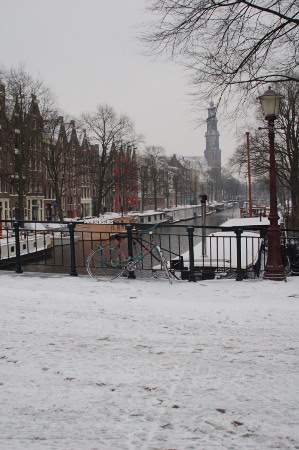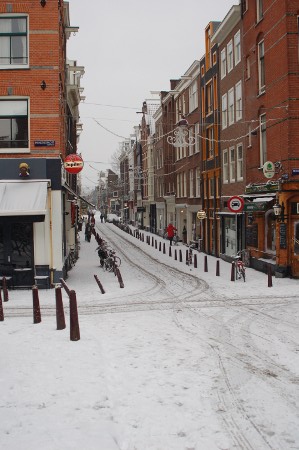This topic comes up every year around this time, and I almost always post something about it. If you’re new or relatively new to gardening, want to save your own seeds, breed your own varieties or simply want to know what you are growing in your garden is truly an heirloom or Open Pollinated (OP) variety, this is an important topic to be familiar with.
If you haven’t heard these terms before, heirloom generally refers to an older variety that’s been around at least since WWII. Some people also use the term for so-called modern heirlooms, which have been created since WWII but using traditional (sometimes called Burbank, after Luther Burbank) breeding methods. OP is simply a more generic term that includes both heirloom and modern heirloom varieties, and in particular if you grow a seed from an OP plant that has not cross pollinated with another plant, the resulting plant will be genetically identical or nearly identical to it’s parent.
Why Grow Heirloom/OP Varieties?
These are certainly the rage now. Everyone wants to grow older types of vegetables.
Most people choose to grow these types, in order to avoid commercially developed varieties or because they want to be able to save and regrow their own seeds.
Commercial varieties, while often aggressively marketed as being something else, are rarely developed for the benefit of home gardeners. Commercial varieties are developed instead for the convenience of farmers, often ripening all at the same time, having tough skins for easy transport, uniform appearance, and so on. These are not usually useful traits for ordinary people.
Commercial varieties are frequently marketed as having disease resistance, often with an impressive list of diseases. In reality these diseases are usually not a concern to home gardeners, rather only to large scale farmers. Specifically, if a variety is resistant to a disease you don’t have in your garden, this resistance is of no use to you. In order to understand if disease resistance is useful, you first have to understand the diseases present in your garden.
In fact you often encounter the opposite of disease resistance in commercial varieties. Since the vast majority of commercial varieties are developed by companies that also sell agricultural chemicals (Monsanto, Dow, etc), commercial varieties are often developed to be susceptible to diseases and to need chemicals. This is because the profit for these companies is simply higher if they can sell both seeds and chemicals.
Many influential people assert that the premise we are getting higher crop yields as a result of chemical intensive agriculture is complete fiction. There is in fact no reason why we could not achieve the same yields with organic methods. There is little reason for chemical intensive agriculture other than so the chemical companies can make a profit selling their chemicals.
Perhaps as important as anything else, most home gardeners have aspirations beyond growing the same vegetables on sale in supermarkets. Usually if you go to the trouble of growing something yourself, you want it to be a little more special than that.
How to Buy Heirloom/OP Varieties
There has been a massive consolidation of seed companies in the last few years, and most commercial garden seeds originate from one of 5 companies: Monsanto, Syngenta. DuPont. Mitsui, Aventis and Dow. There are very few independent seed companies around any more. Jeremy of the Agricultural Biodiversity Weblog recently posted some diagrams illustrating this point. To be clear, these are both companies who sell seeds to farmers, and who sell to home gardeners. These diagrams are not complete, and there are other seed companies owned or partly owned by these large corporations.
The only way to ensure you are not buying seeds produced by these companies are to buy seeds from a retailer that does not sell any of them at all! To be clear, it’s not impossible to buy heirloom seeds from one of these large seed companies, but they do not clearly label them for what they are and do not market them honestly, so you can never be completely sure of what you’re buying.
Typically retailers selling seeds from these larger seed companies will label some or all of them commercial F1 hybrids, but leave the rest unlabelled and assume you will come to the conclusion on your own that these are OP/heirloom varieties. You cannot make this conclusion! If they are not clearly labelled as heirloom/OP, or better yet you are not buying them from a company that has a policy of only selling OP/heirloom varieties, you can not be sure of what you are buying!
The issue of if seeds are commercial F1 hybrids or OP/heirloom is too important. In recent years it’s really become a burning issue, and it’s too important for a seed company to just forget. If a seed company is not crystal clear about what they are selling you, you should buy your seeds from another company. If you want to ensure you are not buying seeds produced by the ‘big 5’ agricultural seed companies, you need to buy seeds from an independent retailer, and the best way to determine if it is independent is if they don’t sell any commercial F1 hybrid seeds at all.
I am aware there are a few, a very small number, of independent seed retailers that do sell commercial F1 hybrids. This is most often corn, as some people grow exclusively heirloom/OP varieties with the exception of corn. I would still suggest you not buy from these retailers, unless their posted policies make crystal clear which varieties are heirloom/OP. Even if you want to grow hybrid corn or other commercial hybrids, I think you are better off buying these from a commercial seed retailer, and the rest of your seeds from a retailer that does not sell any commercial F1s at all. This is really the only way to be completely certain.
I live outside of North America and can’t find an independent seed retailer!
There’s a good reason for that.
With the exception of the US, Canada, Australia and New Zealand, most places in the world have laws restricting or prohibiting the sale of heirloom/OP seeds. I live in Europe, and I can vouch for the fact we have very oppressive seed laws here.
These seed laws usually come in the form of lists of permitted varieties, and anything that’s not on these lists is illegal to sell.
If you live somewhere heirloom/OP seeds are illegal, your only option is to obtain them from a source that’s either local and informal (perhaps a nearby gardener who saves their own seeds or an illegal seed company), or import them. Many independent seed companies around the world are aware of the problem of seed laws, and many will cooperate in sending you plain and unmarked packages. Don’t be afraid to contact seed companies concerning this, and above all don’t be afraid to contact me for advice or help in obtaining seeds from abroad.
Are all hybrids bad?
No! Note that until now I have carefully referred to ‘commercial hybrids’, and there is a very important distinction here. Hybrids are an important aspect of plant breeding, and it’s certainly possible to make hybrids in your own garden, and even share them with others.
I won’t get into this here, but doing your own breeding or sharing breeding materials with others is certainly a very good thing to do, and there is nothing to be concerned about with these hybrids.
Seed companies favor F1 hybrids for an number of reasons, but one of the most important is they are genetically unstable. That is if you save seeds from an F1 hybrid plant, the resulting plant will not be the same as the parent. This makes it impossible for farmers or home gardeners to save and regrow their own seeds into identical plants, and it’s the intention to frustrate people who try. In a way, it’s like seed companies are selling you the results of an incomplete breeding project.
In fact, there’s no reason why anyone who’s interested in experimenting shouldn’t try saving seeds from a commercial hybrid.
Okay, so where do I buy OP/heirloom seeds?
Like I said, look for a seed company with a clearly stated policy of not selling anything except OP/heirloom seeds. This is the surest way.
One of the best ways of getting OP/heirloom seeds is for free. A number of forums exist on the Internet which offer these seeds for trade or free. Caveat emptor! It’s best to correspond with the person offering them a little bit, in order to learn something about them and where they came from.
On this blog, I host a Seed Network. At a minimum, I ensure the people offering seeds here understand the principles laid out in this post, and I do take a quick look at the seeds offered to try to verify if they are true OP seeds, but of course I can’t guarantee anything. If you would like to offer seeds here, please get in touch. Please note, as of the time of writing this post, the seed network hasn’t been updated for 2010. I’ll get to that as soon as I have time.
On my links page, I list quite a number of possible sources of OP seeds, under the heading Seed Sources and Trading Forums.
Finally, there are a few specific seed companies I’ve had contact with, which I would recommend, and most will happily ship abroad:
Real Seeds (UK)
Brown Envelope Seeds (Ireland)
Baker Creek Seeds (US)
Sustainable Seed Co. (US)
Kokopelli Seeds (France)
Salt Spring Seeds (Canada)
Bingenheimer Saatgut (Germany)




